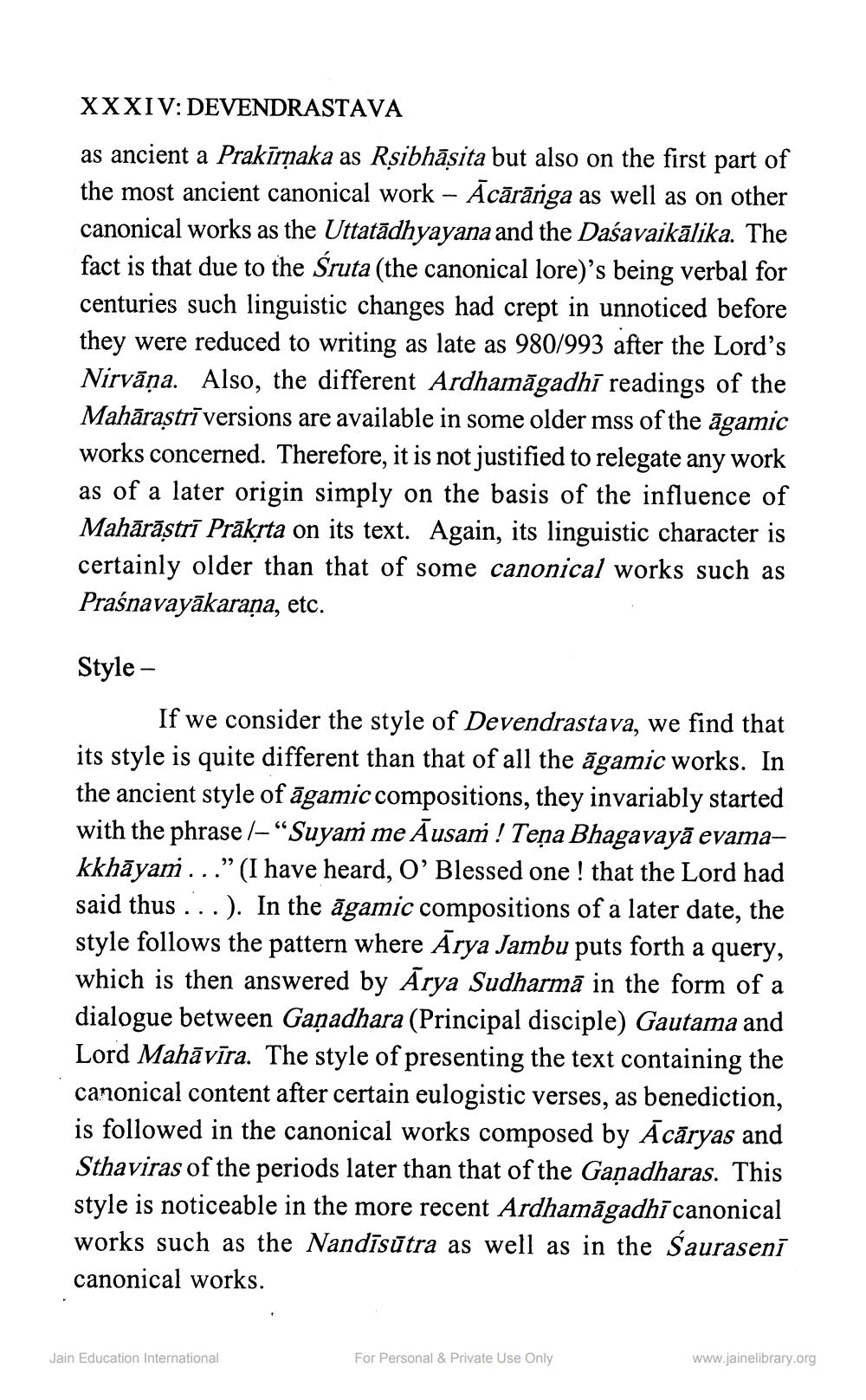________________
XXXIV: DEVENDRASTAVA as ancient a Prakīrņaka as Rşibhāṣita but also on the first part of the most ancient canonical work – Ācārānga as well as on other canonical works as the Uttatādhyayana and the Daśavaikālika. The fact is that due to the Sruta (the canonical lore)'s being verbal for centuries such linguistic changes had crept in unnoticed before they were reduced to writing as late as 980/993 after the Lord's Nirvāṇa. Also, the different Ardhamāgadhī readings of the Mahārastrī versions are available in some older mss of the āgamic works concerned. Therefore, it is not justified to relegate any work as of a later origin simply on the basis of the influence of Mahārāstrī Prāksta on its text. Again, its linguistic character is certainly older than that of some canonical works such as Praśnavayākaraṇa, etc.
Style -
If we consider the style of Devendrastava, we find that its style is quite different than that of all the āgamic works. In the ancient style ofāgamic compositions, they invariably started with the phrase /– “Suyam me Āusam! Tena Bhagavayā evamakkhāyam ...” (I have heard, O'Blessed one ! that the Lord had said thus ...). In the āgamic compositions of a later date, the style follows the pattern where Arya Jambu puts forth a query, which is then answered by Ārya Sudharmā in the form of a dialogue between Gaņadhara (Principal disciple) Gautama and Lord Mahāvīra. The style of presenting the text containing the canonical content after certain eulogistic verses, as benediction, is followed in the canonical works composed by Acāryas and Sthaviras of the periods later than that of the Ganadharas. This style is noticeable in the more recent Ardhamāgadhi canonical works such as the Nandīsūtra as well as in the Sauraseni canonical works.
Jain Education International
For Personal & Private Use Only
www.jainelibrary.org




